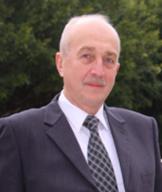
报告人介绍:
Vladimir G.CHIGRINOV教授,信息显示学会(SID)会士,SID俄罗斯分会副主席,曾担任香港科技大学教授。1973年毕业于莫斯科电子学院应用数学学院,1978年在苏联科学院晶体学研究所获得固体物理(液晶)博士学位。自1973年以来,一直担任有机中间体和染料研究所(NIOPIK)的高级研究员、首席研究员和系主任。自1996年起,在俄罗斯科学院晶体学研究所担任主要科学家,并于1999年加入香港科技大学,担任香港科技大学副教授和教授等职。他首次描述了胆甾质液晶的取向不稳定性、铁电液晶的螺旋变形效应、向列相液晶的全内反射、表面滑动效应和表面诱导的取向转变等新的液晶电光模式,并在实验中得到了证实;根据他的理论预测和仿真结果,对LC中的域结构进行了分类;在他的直接参与和监督下,开发了高效的LC光电软件通用建模系统。1974年以来,已发表133篇期刊论文,286篇会议报告,获得50项液晶领域的专利申请。自1999年起,担任俄罗斯、乌克兰、白俄罗斯先进显示技术会议国际咨询委员会委员,2004年起担任欧洲SID项目委员会委员,2006年起担任国际液晶会议国际咨询委员会委员,2015年起担任信息显示学会会士,2017年当选欧盟科学院成员。2012年获香港科技大学圣日耳曼研究卓越奖、香港科技大学研究卓越奖;2014年获马来西亚技术博览会(MTE)上颁发的发明创新奖金奖和最佳奖;2009年、2010年、2012年获华力通颁发的香港科技大学FYP展示最佳团队奖;2018年获SID Slotow Owaki奖,表彰他在液晶教育科研工作中的卓越贡献。
系列报告一 :LC: physics and applications
主讲人:Vladimir G.CHIGRINOV教授
报告时间:2019年12月24日(周二)上午10:00
报告地点:光电大楼104会议室
邀请人:郑继红教授
报告内容:
This seminar will include (i) the physical properties of liquid crystals and preparation of liquid crystal cells the most important for applications; (ii) summary of electrooptical phenomena, as a basis for liquid crystals devices; (iii) performance, manufacturing technology and addressing of passive and active matrix addressing liquid crystal displays; (iv) liquid crystal devices in optical communications and other non-display fields; (v) recent improvements in LCD performance and “hot topics” of LCD research; (vi) market analysis. The seminar is intended for a wide range of engineers, scientists and managers, who are willing to understand the liquid crystal physical properties, geometry of liquid crystal cell and characteristics of electrooptical effects to choose and/or to develop liquid crystal devices with optimal parameters. University researchers and students, who specialized in the condensed matter physics and liquid crystal device developments may also find some useful information here.
系列报告二:Liquid crystal photoalignment: application in Displays and Photonics
主讲人:Vladimir G.CHIGRINOV教授
报告时间:2019年12月25日(周三)上午10:00
报告地点:光电大楼104会议室
邀请人:郑继红教授
报告内容:
We will consider the novel azo-dye photo-aligning technology: including its perspectives for future applications in liquid crystal (LC) Displays and Photonics devices. Azo-dye materials can provide a perfect uniform alignment with a sufficiently high polar and azimuthal anchoring energy, VHR and appropriate pretilt angles. The stabilized azo-dye aligning layers are thermo and UV stable. Patterned LC alignment in LCP films and LC alignment in superthin tubes and 3D surface becomes possible. Photoalignment applications in Displays, Photonics and Optics become a “hot topic” of research. Latest tendencies of photoalignment technology applications in Displays will be also considered. The advantages of LC photoalignment technology in comparison with common “rubbing” alignment methods tend to the continuation of the research in this field. Almost all the criteria of perfect LC alignment are met in case of azo-dye layers. Nowadays azo-dye alignment materials can be already used in LCD manufacturing, e.g. for the alignment of monomers in LCP films for new generations of Photonics and Optics devices such as phase retarders, polarizers and color filters. We will have a possibility to tune the alignment properties like (anchoring energy, ability of align LC materials, image sticking, light sensitivity, photo stability, reorientation speed etc.) by preparing the proper weight ratio of the azo-dye compound. Thus having the limited number of basic azo-dyes structures the continuous range of different alignment properties can be covered. Recently the new application of photoaligned technology for the tunable LC lenses with a variable focal distance was proposed. Thin photo-patterned micropolarizer array for CMOS image sensors for in-situ analysis of the four Stokes parameters of the output optical signal are also envisaged. Photoalignment is definitely the only technology, which enable non-defect LC orientation inside superthin tubes (tunable photonic crystal/liquid crystal fiber structure) and on tiny rings (Si micro-ring resonators). New optically rewritable (ORW) liquid crystal Photonics devices with a light controllable structure may include LC plane waveguides, LC polarization dependent elements, such as lenses and wave plates, LC polarization rotators and polarization controllers, light and voltage controllable diffraction gratings for optical filters etc. We are sure, that the common rubbing alignment technology will be totally replaced by a photoalignment in the near future, thus increasing the quality of LCD.
系列报告三:Modeling and optimization of liquid crystal displays (LCD) and Photonics devices.
主讲人:Vladimir G.CHIGRINOV教授
报告时间:2019年12月26日(周四)上午10:00
报告地点:光电大楼104会议室
邀请人:郑继红教授
报告内容:
Modeling and optimization of liquid crystal displays (LCD) and Photonics devices will be considered. The procedures of solving the LC director distribution in electric field as well as Maxwell equations of the light propagation in anisotropic LC media will be clarified. The examples of new LCD configurations based on optimization results will be highlighted. Modeling Universal System of Liquid Crystal Displays (MOUSE -LCD) software will be demonstrated for the calculation of LC electrooptical behavior and optimization of the new LCD prototypes. Modeling and optimization of LC photonics elements: optical switches, polarization controllers, polarization rotatores, attenuators etc. will be also considered. The concrete examples of LCD modeling and optimization will be highlighted.
系列讲座四:Fast switchable liquid crystal cells for displays and photonics applications
主讲人:Vladimir G.CHIGRINOV教授
报告时间:待定
报告地点:光电大楼104会议室
邀请人:郑继红教授
报告内容:
The response time of liquid crystal displays is still inferior to the existent competing technologies, such as plasma display panels (PDP) or organic light emitted diodes (OLED). The target LC cell response time for a field sequential color (FSC) and 3D displays should be less than 1 ms (240 Hz frame frequency) to provide a high resolution, low power consumption and extended color gamut liquid crystal displays (LCD). Fast electrooptical modes in nematic LC, such as optically compensated birefringence (OCB), no bias bend (NBB) or stressed splay twist (SST) modes do not seem to be very helpful to meet the new requirements for FSC and 3D display applications. Some hope still exists, when the double cell configurations are used. One of the candidates for fast switching LC materials is a blue phase. However, these materials still suffer a relatively narrow temperature range, too high applied voltage and a hysteresis in the electrooptical response. Another candidate is a flexoelectric mode in short pitch cholesteric LCs. The mode shows a high dependence of the response on the LC alignment quality as well flexoelectric LC modules, which are mostly responsible for the high contrast ratio and fast switching time.Fast switching ferroelectric liquid crystal (FLC) displays (FLCD) is a good candidate for the new generation of LC display and photonics devices, which proved to be better in response time, especially deformed helix ferroelectric (DHF) mode and its modifications, which provide a high contrast, and extremely fast switching time for a very low applied voltage.

